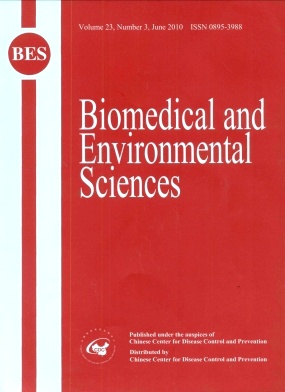Report on Childhood Obesity in China (8): Effects and Sustainability of Physical Activity Intervention on Body Composition of Chinese Youth
-
Key words:
- Intervention /
- BMI /
- School /
- China
Abstract: Objectives To determine whether a large-scale physical activity intervention could affect body composition in primary school students in Beijing, China. Methods The study design was one-year cluster randomized controlled trial of physical activity intervention (20 min of daily exercise in the classroom) with an additional year of follow-up among 4 700 students aged 8-11 years at baseline. Results After the one-year intervention, BMI increased by 0.56 kg/m2 (SD 1.15) in the intervention group and by 0.72 kg/m2 (SD 1.20) in the control group, with a mean difference of-0.15 kg/m2 (95% CI: -0.28 to -0.02). BMI z score decreased by -0.05 (SD 0.44) in the intervention group, but increased by 0.01 (SD 0.46) in the control group, with a mean difference of-0.07 (-0.13 to -0.01). After another year of follow up, compared to the control group, children in the intervention group had significantly lower BMI (-0.13, -0.25 to -0.01), BMI z score (-0.05, -0.10 to -0.01), fat mass (-0.27 kg, -0.53 to -0.02) and percent body fat (-0.53, -1.00 to -0.05). The intervention had a more pronounced effect on weight, height, BMI, BMI z score, and body composition among obese children than among normal weight or overweight children. Compared to the control group, the intervention group had a significantly higher percentage of children who maintained or reduced their BMI z score at year 1 (P=0.008) and year 2 (P=0.04). Conclusions These findings suggest that 20 min of daily moderate to vigorous physical activity during the school year is a feasible and effective way to prevent excessive gain of body weight, BMI, and body fatness in primary school students.
| Citation: | YAN-PING LI, XIAO-QI HU, EVERT G. SCHOUTEN, AI-LING LIU, SONG-MING DU, LIN-ZHONG LI, ZHAO-HUI CUI, DONG WANG, FRANS J KOK, FRANK B HU, GUAN-SHENG MA. Report on Childhood Obesity in China (8): Effects and Sustainability of Physical Activity Intervention on Body Composition of Chinese Youth[J]. Biomedical and Environmental Sciences, 2010, 23(3): 180-187. |







 Quick Links
Quick Links
 DownLoad:
DownLoad: